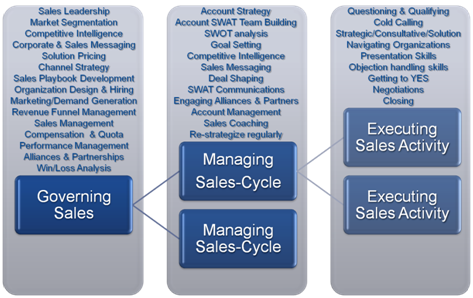Walking the talk
Posted by Robert Beauchemin on Mar 27, 2010
 In one my past engagements, where we had agreed to implement a whole bunch of changes, the CEO asked me, "how do we do that?", "how do we implement this new way of thinking?" After explaining all the concepts of change leadership, operational alignment and organization alignment, I felt they were still not all on the same page. So, I added: "you have ALL to walk the talk", I said.
In one my past engagements, where we had agreed to implement a whole bunch of changes, the CEO asked me, "how do we do that?", "how do we implement this new way of thinking?" After explaining all the concepts of change leadership, operational alignment and organization alignment, I felt they were still not all on the same page. So, I added: "you have ALL to walk the talk", I said.
As smart as I thought I was, the answer clearly remained unfulfilling, I could see.
What does "walking the talk" mean?
We intuitively know that you can't say one thing, point everybody in one direction, and then walk in a different path. We all understand it means preaching by example.
But to preach something, by example or not, you need to have something to preach about. More precisely, you need to be complete, coherent and abundantly clear about your preaching. There should not be much room for interpretation. There should not be ambiguity. There should not dissonance in what is being preached. Read the rest of this entry »
Resistance to change – really?
Posted by Robert Beauchemin on Apr 30, 2008
I was reading a post at LeadershipNow entitled Getting the Information You Need. It referred to an article written by Mark Ronald and Robert Shaw from the Leader to Leader institute entitled Developing Peripheral Vision.
They warn to watch for signs of resistance to change:
Silence: In leadership teams, members who don't support the trend of a decision often simply disengage from the dialogue and remain silent rather than pose a contrary point of view—particularly if the leader appears to support the decision or the group is moving quickly to closure. Who has checked out?
Non-answers: People can opt out by appearing to agree with the leader when, in fact, they do not. "If you think it's the right decision, that's good enough for me."
Omissions: It is often what is not said that is most critical—particularly on issues that the leader believes will be problematic.
Specific language: People surface their true feelings in hundreds of subtle ways. Leaders need to pay attention to the specific use of words that are flags suggesting that more discussion or follow-up is needed.
Offline input: Often, the insights people bring to a leader (or each other) during the breaks of meetings or in informal hallway conversations are more important than what is said in formal discussions.
E-mail traffic: In many firms, e-mail offers insight into potential issues that may require a leader's attention. For example, an overly formal e-mail message with multiple people copied (or blind copied) is often a protective action taken by a team member with concerns.
Those six behaviours are part of what I call "background conversations" which are typical incarnations of "passive resistance" – the worst kind of resistance. Background conversations occur when one's head says YES and one's heart say NO; when one lets other under the belief that agreement exist, when in fact it does not.
Why aren’t the dogs eating the dog food?
Posted by Robert Beauchemin on Apr 1, 2008
Many organizations throw sales people out on the street in the hope they will make their companies successful. Although sales success is not possible without great sales people, a lot more than hiring great sales people is required to achieve sales success.
 Sales leadership starts in the office of the CEO. The office of the CEO must induce a culture of strategic selling to the whole organization. Selling strategically means implementing a Sales Governance Model and developing competencies at 3 levels: Sales Governance, Sales-Cycle Management and Sales Execution.
Sales leadership starts in the office of the CEO. The office of the CEO must induce a culture of strategic selling to the whole organization. Selling strategically means implementing a Sales Governance Model and developing competencies at 3 levels: Sales Governance, Sales-Cycle Management and Sales Execution.
As you look at the list of competencies an organization has to develop, at various levels of its hierarchy, it is not surprising that there are many weak spots that need serious attention.
Bad sales leadership is just as lethal as ineffective closing skills. Going after the wrong market is just as ineffective as delivering poor customer presentations. Keeping underperforming sales people is just as expensive as working on unqualified prospects.
A great sales person will manage his/her sales cycles to mitigate other weaknesses in the organization's selling paradigm, but it would be a mistake to believe all your sales people are at that level of efficiency and effectiveness. Less than 10% are.
To make the other 90% of their sales people more successful, organizations should look at their sales model in a holistic manner. It is my belief that organizations are responsible for the success of their sales people, and not the other way around.
You can read more here… GOOD SELLING !